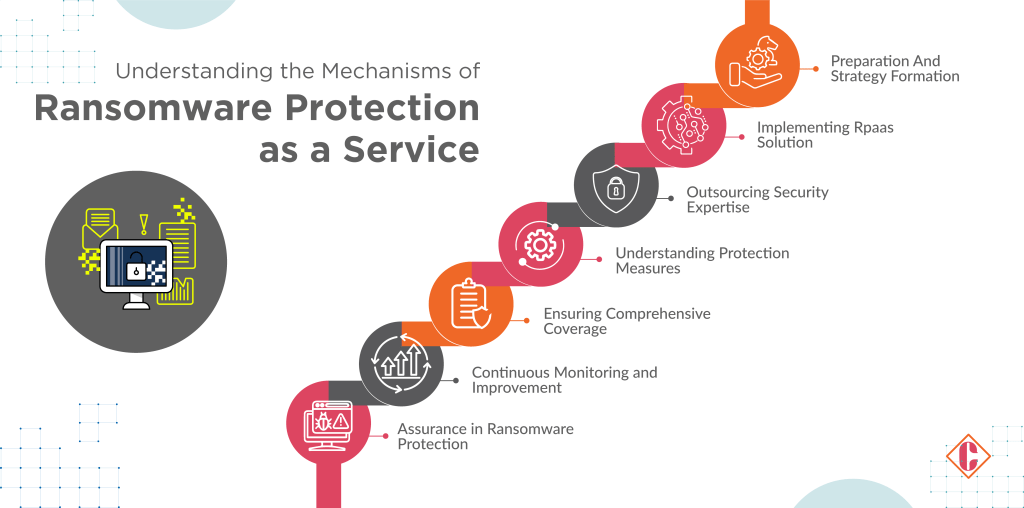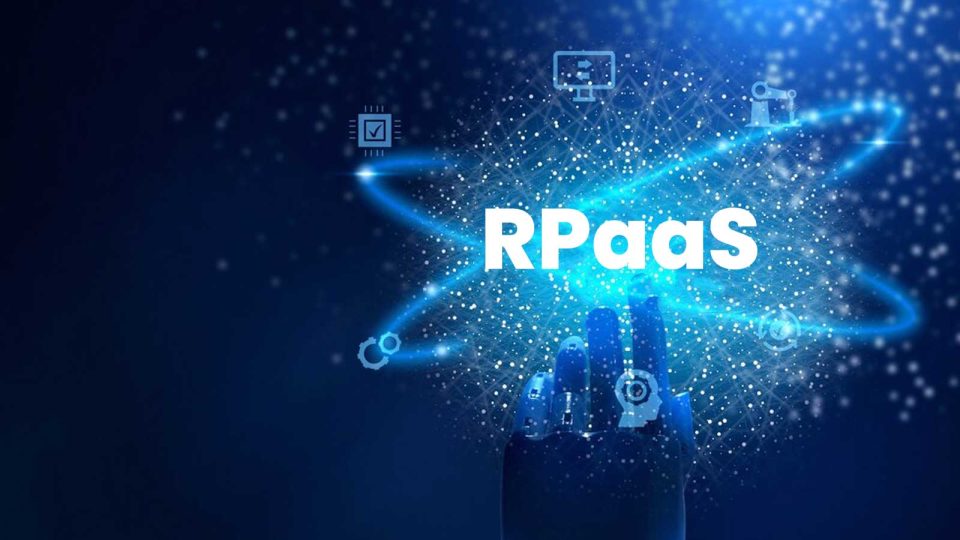What is RPaas?
Ransomware Protection as a Service (RPaaS) emerges as a vital solution to combat the pervasive threat of ransomware attacks. These attacks inflict severe consequences on businesses, extending beyond financial losses to operational disruptions, customer dissatisfaction, regulatory penalties, and enduring damage to reputation. It’s crucial to acknowledge the inevitability of ransomware incidents; they persist due to human vulnerability to email-based malware. Their omnipresence mandates a robust and continual defense strategy.

RPaaS encompasses preventive and restorative measures, offering a comprehensive shield against ransomware attacks. Combining prevention, restoration, and detection within a single service, RPaaS addresses the gaps in traditional security and recovery approaches.
Although essential, traditional disaster recovery plans do not entirely safeguard data from cyber-attacks. Likewise, separating cyber-attack recovery plans doesn’t cover the comprehensive threat landscape, including ransomware. The nature of ransomware disrupts conventional security, disaster recovery, and recovery time objectives.
Ransomware attacks have risen by 13% in the last five years, with an average cost of $1.85 million per incident. By 2031, statistics predict a ransomware attack every two seconds, and there were around 236.7 million ransomware attacks globally in the first half of 2022.
RPaaS brings experts from DR and cybersecurity to collaborate on a unified, enhanced plan. This collective effort encourages businesses to adopt optimal strategies instead of maintaining scattered plans for varied scenarios. Aligned with the National Institute of Standards and Technology (NIST) principles, RPaaS covers fundamental security functions: Identify, Protect, Detect, Respond, and Recover. While no protective strategy guarantees absolute effectiveness due to human factors, the emphasis on response and recovery in RPaaS addresses the unique challenges ransomware attacks pose.
Key Ransomware Protection as a Service Subcategories
Security Operations Center as a Service (SOCaaS)
SOCaaS constitutes a pivotal segment of RPaaS, where a specialized security operations center (SOC) team actively monitors and alerts against potential threats, aiming to preempt attacks. This team, comprising skilled experts, focuses on swift identification and containment of malicious activities. Leveraging a suite of tools, including firewalls, zero tolerance security, endpoint, EDR, MDR, SIEM, and other detection and prevention technologies, they mitigate security risks proactively.
Ransomware Response as a Service (RRaaS)
This vital facet integrates failover mechanisms, forensics, data sanitation, immutable backups, and critical recovery essentials. RRaaS, equipped with robust testing and documentation processes, amalgamates Disaster Recovery as a Service (DRaaS) and Backup as a Service (BaaS). This unified strategy ensures swift and efficient recovery specifically tailored to ransomware events. It enhances conventional approaches like air gapping, multi-factor authentication (MFA), and immutable backups, incorporating managed replication and rapid recovery models. This setup establishes alternative failover targets in case of primary data center compromise.
Virtual Chief Information Security Officer (vCISO)
Including a vCISO in RPaaS offers dedicated security counsel and guidance. This individual is pivotal in strategizing and executing recovery plans, overseeing quality assurance, and leading forensic investigations. Providing ongoing advisory support, the vCISO aids in maturing security processes and mitigating business risks. They assist IT teams in analyzing, advising, and formulating crucial governance policies and procedures. During a ransomware event, the vCISO contributes significantly to executing the response strategy.
Significance of Ransomware Protection as a Service
The threat landscape has intensified with the escalating frequency of ransomware threats fueled by evolving work environments like remote setups and online education. According to Mettalic.io, approximately 60% of enterprises encountered ransomware attacks. The trend persisted, as evidenced by a 40% surge in ransomware incidents.
Insufficient readiness against ransomware makes companies susceptible to severe consequences: data loss, security vulnerabilities, and substantial operational downtime. In an era where continuous data accessibility is imperative for users and businesses, a robust ransomware protection strategy is a crucial defense mechanism. It safeguards organizations against inevitable attacks and ensures a swift recovery from disruptive incidents.
Ransomware Protection: A Valuable Investment for Businesses
- Business Continuity Assurance: Safeguarding critical data and applications from ransomware ensures uninterrupted business operations. Ransomware protection limits business recovery time by preventing prolonged shutdowns and reducing the success rate of attacks.
- Risk Mitigation Strategy: Integral to a robust security posture, ransomware protection complements access management, anomaly detection, data encryption, and stringent user controls. This comprehensive defense shields organizations from cyber threats effectively.
- Cost Efficiency: Investing in ransomware protection proves economical compared to the aftermath of a successful attack. Downtime expenses and potential data loss impact customer trust significantly. Proactive protection minimizes these risks, securing valuable data assets for businesses.
A Few RPaas Providers
-
Acronis
-
Barracuda
-
Cisco
-
Crowdstrike
-
Deepwatch
-
Palo Alto Networks
-
Sophos
-
XDR
A Step-by-Step Guide to RPaaS Implementation

The imminent threat posed by ransomware is the foremost concern for businesses, irrespective of their scale. Cybercriminal strategies continuously evolve, seeking novel avenues to breach systems and networks. To mitigate risks effectively, companies must adopt an assertive defensive approach while concurrently preparing for the potential success of an attack.
Employing AI and ML tools becomes imperative for businesses in detecting, preventing, and addressing ransomware assaults. The trajectory of ransomware necessitates adeptness in scrutinizing traffic patterns, identifying irregularities, and preempting potential breaches. Proactively leveraging AI and ML enables businesses to proffer advanced protection against ransomware threats, fortifying the safeguarding of crucial data and operational processes.
FAQs
1. Who needs RPaaS?
Organizations of all sizes can benefit from RPaaS, especially those that:
- Handle sensitive data
- Have limited cybersecurity resources
- Rely heavily on technology for their operations
2. How do I choose an RPaaS provider?
When choosing an RPaaS provider, consider factors such as:
Reputation and experience: Choose a provider with a proven track record of success in protecting against ransomware.
Technology and services: Ensure the provider offers the necessary features and services.
Pricing: Compare the prices of different providers to find a solution that fits your budget.
Customer support: Make sure the provider offers good customer support in case you need help.
3. What are the features of RPaaS?
- Endpoint detection and response (EDR): Monitors endpoints for suspicious activity and automates responses.
- Network traffic analysis (NTA): Analyzes network traffic to identify malicious activity.
- Threat intelligence feeds: Provide real-time information about the latest ransomware threats.
- Security incident and event management (SIEM): Aggregates security data from multiple sources to provide a holistic view of your security posture.
- Sandboxing: Tests suspicious files and applications in a controlled environment to determine if they are safe.
- Data backup and recovery: Backs up your data regularly and allows you to restore it quickly in case of an attack.
[To share your insights with us, please write to sghosh@martechseries.com]


